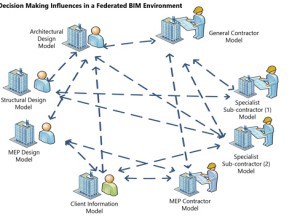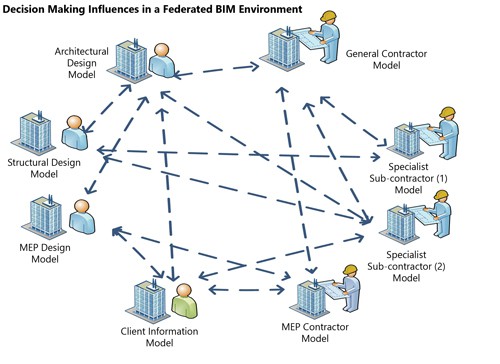BIM is part of a more fundamental shift in the construction industry from analogue to digital work practices. The DPW Group provides some insight in to the effective implementation of a BIM strategy.
Industry stakeholders are recognising the potential benefits locked in data that is created over the course of project activities, and BIM is a key component in accessing these benefits. However, using BIM for the sake of it does not add any real benefit to projects. For tangible bottom line results, BIM needs to be considered in the wider context of gaining insights and effectively transforming those insights into performance benefits through information management. While various technologies are needed to add, extract, and visualise information, the social aspects of BIM drive results. People are the key variables in developing a successful BIM strategy for projects and teams.
Digitalisation of the construction industry is enabling teams to generate significant amounts of project related data, however data on its own is of limited use and value. In order for data to be useful for project stakeholders, it needs to be transformed into information by providing context and developing relationships with other bits of data. For example, knowing the ventilation rate requirements for a given space on its own is of limited value. Developing a relationship between ventilation rate requirements and the volume of the space (contextualising and relating pieces of data) transforms the individual pieces of data into information that can be analysed and used as a variable for making decisions, such as the selection of an air handling unit (AHU). In terms of basic modelling, we can continue with this example and assume a preliminary AHU selection is made based on limited information and a component is placed within a modelled space.
The position of the AHU can be seen as data that does not have any significance until it is related to maintenance zone requirements and the position of adjacent spatial constraints, such as walls or other equipment. With data again transformed into information, new insights can be gained and the AHU selection can be validated or vetoed based on the outcomes of information management and analysis. Similar to data, the insights derived from BIM and information management do not translate into value if they are not acted upon. In this example, it can be argued that the risk associated with the spatial design and AHU selection is being mitigated through the insights derived and actioned by participants in the model information management process.
While the previous example is a simplification of a design decision process, a number of BIM and information management considerations can be inferred:
All project stakeholders have a responsibility to provide data and make connections that converts it into information.
Sound project decision making can be enhanced through the creation, storage, management, and access to information, which elevates information management to a critical business process for project stakeholders.
Insights only have value if they are used in the decision making processes.
Data and information only has value if it is going to be used.

The ability to generate vast amounts of project data is a function of BIM technology. Successful BIM implementation recognises data volume as an opportunity rather than a solution. Project teams that have access to tools and techniques, which enable information based decision making processes will be in a position to realise bottom-line benefits of BIM.




